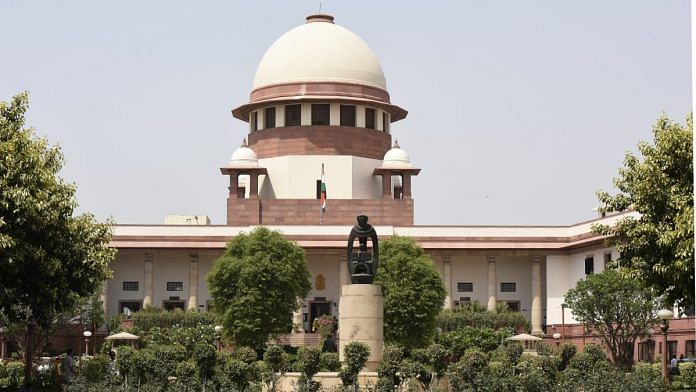The Supreme Court refuses to entertain any executive involvement even as it continues to squander every opportunity to address its structural issues.
The order of business in the Supreme Court for this week was changed abruptly. A constitution bench headed and chosen by Chief Justice Dipak Misra is set to decide yet another issue that has divided judges. The issue is a question of judicial discipline: can a bench of three judges nullify a judgment of anther bench of equal strength by overlooking the usual route of referring it to the chief justice for constituting a larger bench?
The issue may seem pedagogical to many, but it has far-reaching consequences in the judicial order. The issues of bench strengths and judicial discipline lay open a more serious institutional problem — the highest constitutional court of the country speaks through almost fourteen benches.
Of course, the timing of the issue and the characters involved make the case more political than pedagogical – two of the four senior judges who spoke out against the chief justice (CJI) for assigning cases to a “preferred bench” and the man on the “preferred bench”, judge Arun Mishra.
It is perhaps time for the government to consider a new intervention- setting up a permanent constitution bench in the apex court. But the court refuses to entertain any executive involvement even as it continues to squander every opportunity to address its structural issues.
Over the last six decades, the supreme court’s jurisprudential realm has expanded massively. The framers of the Constitution were aware of the “flood of cases” when they said that the supreme court’s jurisdiction is “wider than any superior court in any part of the world.” This results in a great concentration of powers solely in the apex court and often distracts it from focussing more on cases involving questions of law and interpretation of the constitution. To compound the problem, courts have also taken on too many insignificant or extraneous issues as public interest litigation.
Often, too many smaller benches give conflicting rulings on the same issue requiring another authoritative ruling by a larger bench.
According to the Constitution itself, its interpretation necessitates a bench of five or more judges. This rule is often ignored, and such benches are now set up sparingly, and only in exceptional cases.
Take, for example, the case in which the court refused to decriminalise homosexuality. An issue involving a reading of fundamental rights listed in the Constitution was decided by a bench of just two judges. Knowing that the final arbitrator of rights – the apex court – can make mistakes, it evolved the extra-constitutional concept of curative petitions. The court has now agreed that the case will be heard again by a bench of five judges. Meanwhile, the question of fundamental rights have been suspended for over a decade.
Often the CJIs have simply shrugged, saying they “cannot spare so many judges” and bring the court to a halt.
Since it is the chief justice’s prerogative to constitute such benches on demand, it also results in an undue concentration of powers in one office. And the CJI’s office is accountable to none. The urgency in setting up a bench next week, suspending another one that is hearing the Aadhaar case, further proves that there is a serious imbalance of powers in the CJI’s office.
Other countries have dealt with similar issues in a systemic approach.
The Supreme Courts in the United States, Canada and New Zealand sit “en banc” as a court of all justices. So does the High Court of Australia. The German Federal Constitutional Court has two ‘senates’ of 8 members each, and the European Court of Human Rights has 47 judges organised into 5 sections, sitting in Chambers of 7, with cases being referred to a Grand Chamber of 17.
Even in India, many jurists have offered solutions. Attorney General K.K. Venugopal is a vocal advocate of setting up four regional or zonal Courts of Appeal. According to him, these courts would absorb a bulk of the apex court’s cases on issues such as rent control, matrimonial disputes, service matters and motor vehicle laws and leave the Supreme Court to be a “true constitutional court.”
This idea has been hailed by lawyer T.R. Andhyarujina and former judge V.R. Krishna Iyer. Former chief justice T.S. Thakur also toyed with the idea when this issue came up as a PIL in 2015. Venugopal and Andhyarujina were appointed to assist the court. Ironically, the case was referred to a constitution bench in July 2016, which is yet to be set up.
The government, however, rubbished their proposal and called it a self-defeating exercise. But instead, both the court and the government viewed this proposal as a means of resolving the perennial pendency problem.
A permanent constitution bench in the apex court – if not a separate court of appeal as they proposed – is perhaps the answer to many institutional problems that the court is currently facing. CJI Misra, in his current position, who will head as many as 14 constitution benches, could be receptive to the idea. Not only will it take away complaints of arbitrary use of CJI’s powers, but also prioritise issues for the apex court. Above all, it will restore the spirit of justice in the judiciary.



